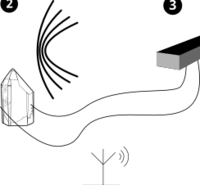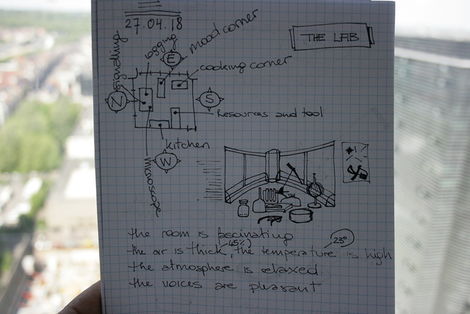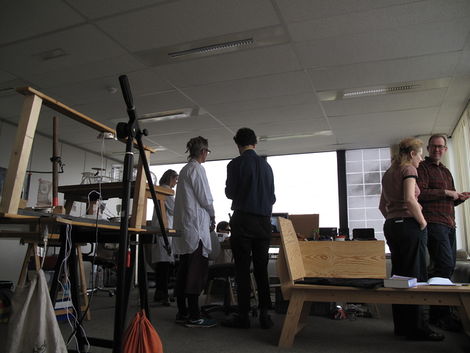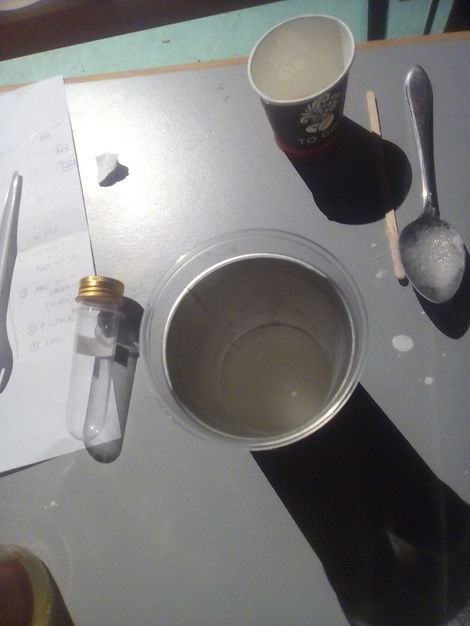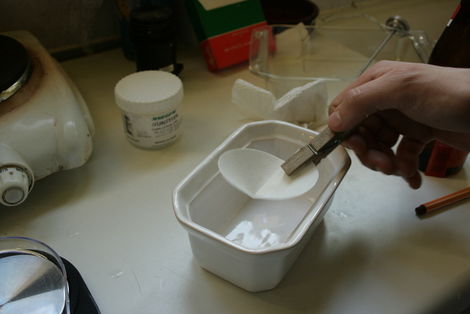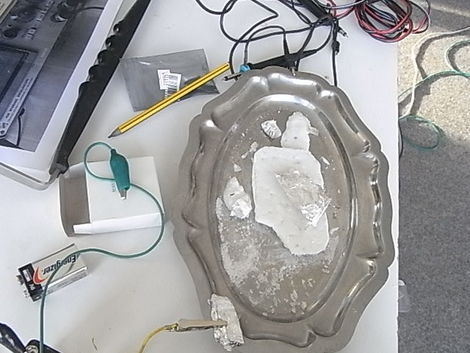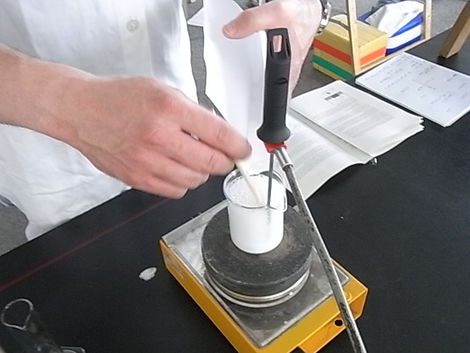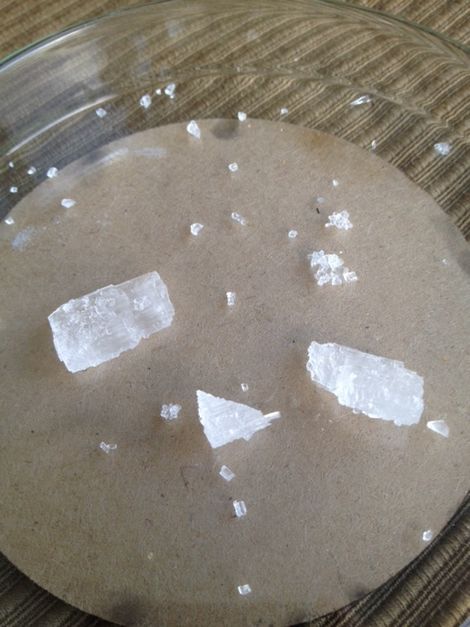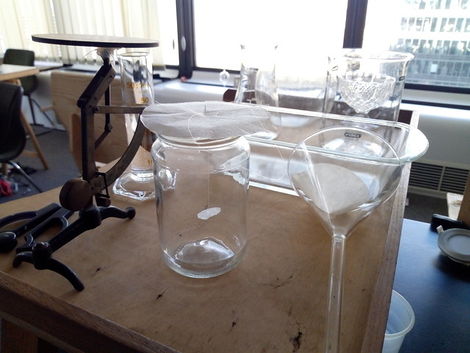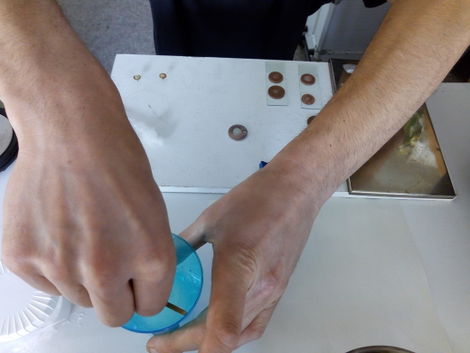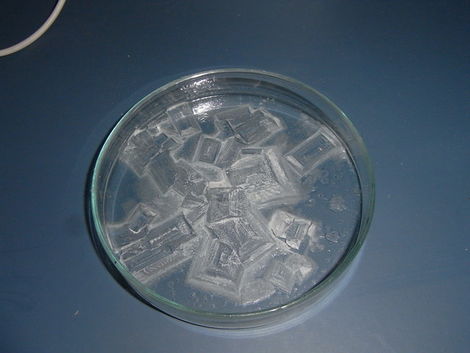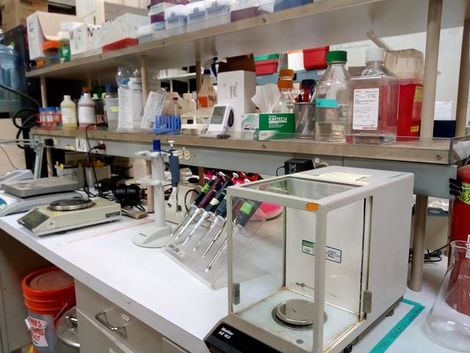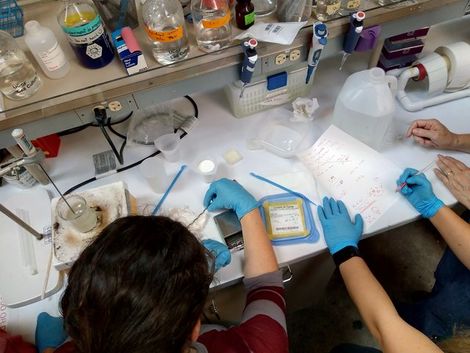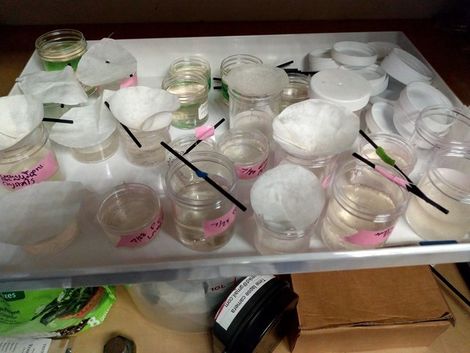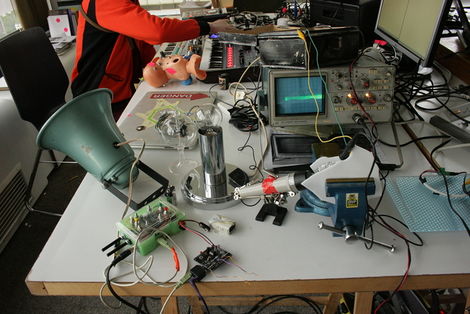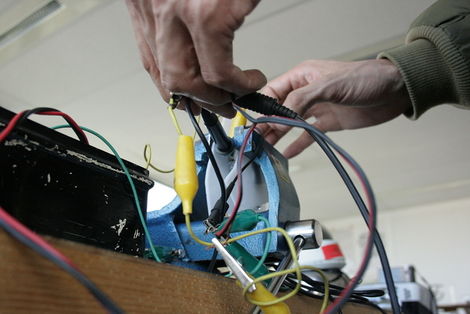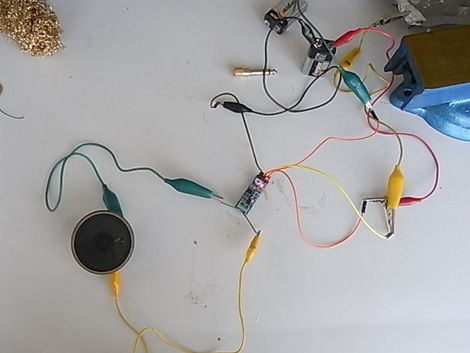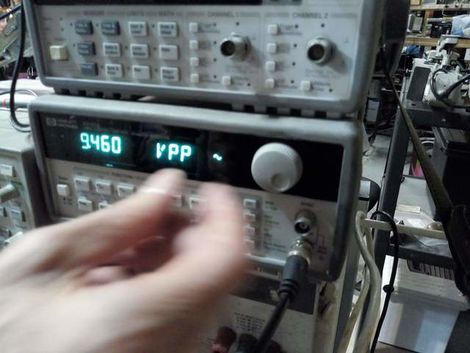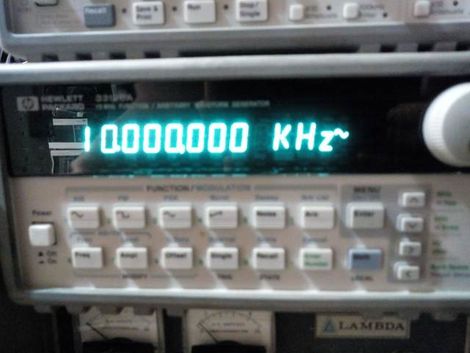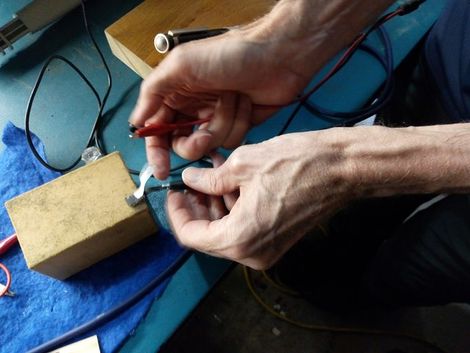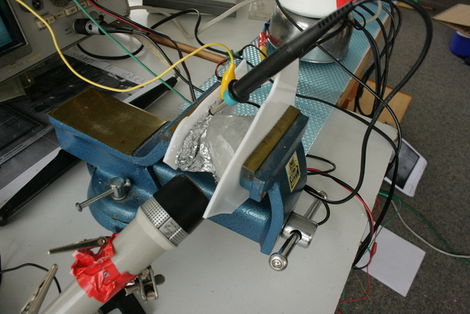This is an old old old archive. Please don't trust any information you find on this wiki. Looking for up-to-date information? Go to hsbxl.be or join our Matrix channel.
Crystelling
|
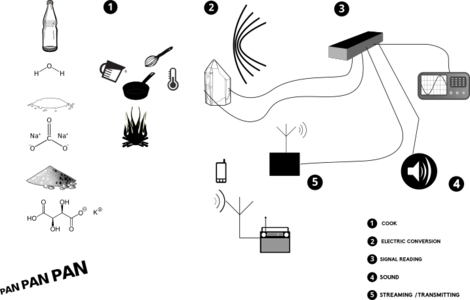
Contents
INSTALL LAB[edit]
- tools:
- magnetic stirrer hotplate - thermometer - funnel - erlenmeyers - wooden spoons - stirring sticks
- ingredients:
- CREAM OF TARTARE - DEMINERALIZED WATER - SODIUM CARBONATE - SODIUM BICARBONATE
Cook Piezo electric crystals[edit]
In this cooking or growing process, we experiment with different online manuals, and follow the advise, experience and praxis of different interviewees: Perkisas Tyché (UA Antwerpen), Selma (Bosnian high School project). We selected Rochelle Salt as a 'test piezo electric crystal', as we can grow it in the our DIY lab.
SESSION ccc - Leipzig[edit]
- INSTRUCTIONS:
https://sites.google.com/site/scidiy/diy-electro/piezo-rochelle-salt-crystal
- no pure crystals: due to unknown quality of cream of tartare
SESSION 2 S14 - Antwerp[edit]
S14 - Antwerp
- INSTRUCTIONS
http://www.extremenxt.com/blog/?page_id=77%7Chttp://www.extremenxt.com/blog/?page_id=77
- no pure crystals: thermometer - not reliable
Result test:
SESSION 3 constantvzw[edit]
The room is fascinating, the air is thick (45%), the average room temperature 23°, the atmosphere is relaxed, the voices are pleasant. 15th floor, World Trade center Brussels, Constant vzw Studio. Altitude: 10Om.
BATCH 3
- INSTRUCTIONS
http://www.extremenxt.com/blog/?page_id=77
Rapidly, after 4 hours 2 clear crystals appear in the solution.
The best crystals get selected for using as seed crystals, to enhance the purity and size of the crystal and get a monocrystalline Rochelle Salt.
The challenge is to make an oversaturated solution and hang the seed crystal inside, so it will grow.
https://www.youtube.com/embed/cNyQ_pMGxWs?autoplay=0&rel=0
- crystals disslove, probably due to natriumbicarbonate, which contains hydrogen
Batch 4
- INSTRUCTIONS
http://www.extremenxt.com/blog/?page_id=77
Replace sodiumbicarbonate with sodiumcarbonate and experiment with different grow carriers.
- crystals are drying: result unknown until now
- INSTRUCTIONS
https://www.erowid.org/archive/rhodium/chemistry/rochelle.html
After calculating the [molecular weight] of the different ingredients we decided upon the following values: - demineralized water (125ml) - potassium tartare (100g) - sodiumcarbonate (23g+ 10g)
The most important factor to calculate was the molecular weight difference between Sodiumbicarbonate and Sociumcarbonate, As in the process of 'drying', the sodiumbircabonate, we need to know the weight of the hydrogen which evaporates, well described in [1]
- crystals are drying: result unknown until now
after 6 days :
Batch 5
We keep the same recipy as the crystal form well in their hexagonal form
- demineralized water (125ml) - potassium tartare (100g) - sodiumcarbonate (23g+ 10g)
SESSION 4 buratinas[edit]
Batch 6
It is quiet hot outside, we are installed in a the Brussels boatwarf, along the Brussels Canal, the wind comes from North, North west, and it is around 25° degrees and there is a 62% relative humidity. The lab is installed in the boat under a solar panel where the temprature is slightly higher. Due to shortage of certain ingredients we divide the quantity by 100.
- demineralized water (1,25ml) - potassium tartare (1,00g) - sodiumcarbonate (0,33g)
After cooking, we add a little alcohol (jenever) based on a procedure of various artists to enhance the process
Batch 7
On the Brussels canals, in the boat is around 30°, it is 32 relative humidity, the orgonite is activated and there is only 2 mm of water in the boat.
SESSION 5 w-o-l-k-e[edit]
We are surrounded by a lot of different minerals: quartz, tourmaline, pierrite, amethint; agathe.
The atmosphère et légerment humide, il y a des cris d'enfants et à coté de nous un carrousel.
Batch 8
SESSION 6 Yerba Buena Center[edit]
Batch 9
SESSION 7 Counterculturelabs[edit]
- testing ph, using polarizing filters
- introducing Chirality (geometric properties of some molecules and ions)
- checking polarizing filters
- cooking 3 batches in bigger quantities because of accessibility to equipment and tools
- shortage of cream of tartare leads to experiments on quantities, resulting in quiet pure crystal solutions
Measure Piezo electricity[edit]
- report different crystals/ voltage difference
- when hitting the crystal,the piezo elctricity is visible on the oscilloscope, but on very low voltages
- using different Opamp to increase the signal
- opamps have to low input Voltage to amplify (50mV); seemingly we amplify the interference and receive a lot of FM radio
- piezo amplification
http://www.richardmudhar.com/blog/using-piezo-contact-mics-right/
- to solder
https://www.zachpoff.com/resources/alex-rice-piezo-preamplifier/ http://interface.khm.de/index.php/lab-log/piezo-disk-preamplifier/
- preamp schematic by lenart
- Visualize in xymode on oscilloscope
Resonance Frequency[edit]
We tried to drive the piezo crystal with a signal generator at 1kHz, 10V peak to peak - no sound. Switched to the ceramic piezo - heard a clear beep.
We taped the round ceramic piezo to the grown crystal; powered the ceramic piezo from the signal generator, and measured voltage from the grown crystal with the oscilloscope. The ceramic piezo acts as a speaker, vibrating the crystal. The crystal then acts as a microphone turning sound waves back into electricity. We +noticed that the faint 60Hz ripple on the oscilloscope actually flattened when we powered the ceramic piezo at 1kHz, but didn't see any actual 1kHz signal on the oscilloscope. So we increased the frequency on the signal generator, and we started seeing a signal on the oscilloscope - yay! 10kHz seemed to produce the strongest signal out of the crystal.
Next, we detached the grown crystal from the ceramic piezo, and taped it on a small cardboard box as an acoustic resonator. Then we connected the signal generator to the grown crystal directly (10kHz, 10V peak-to-peak), and heard a faint high-pitched beep.
- To confirm the value of the signal generator, as it could also be 10Mhz.
http://leapsecond.com/hpan/an200-2.pdf
http://pages.suddenlink.net/wa5bdu/crystal_slide_show.pdf
https://www.jauch.com/downloadfile/5804d138f41b5_c3e35434e616a6a82bd5/quartz_crystal_theory_2007.pdf
https://www.electronicdesign.com/analog/fundamentals-crystal-oscillator-design
Audio/ processing[edit]
- patch axoloti
Via audio input digital processing with piezosnare patch
- resonance frequency of the crystal
430 KHz, on very high frequency, not audible for human being to amplify we need to be conscient about the Nyquist frequency of the devices we are using when sampling.
Transmitting[edit]
- Stream on p-node.org
- transmit on local 108FM
